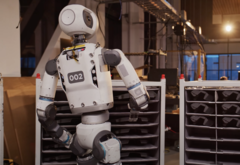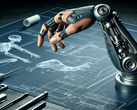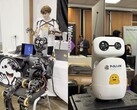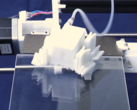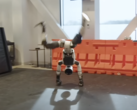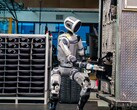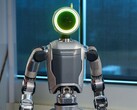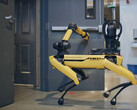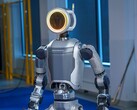Atlas is continuing to evolve. In a fairly long video with infrequent explanations, Boston Dynamics demonstrates how Atlas now copes with changing environments. While it's still the usual sorting of car parts, the developers are hoping that Atlas will be able to adapt to a dynamic environment. In other words, Atlas should be able to react and adapt to changing circumstances or anomalies.
For example, as shown in the video, Boston Dynamics employees constantly move the position of the shelf container into which parts must be sorted. This requires the robot to adapt, which it does so quickly. In a further example, an employee drops a part next to Atlas, which makes a noise. The robot registers this via a microphone, but lacks microphone-based location, so it systematically scans the environment with its camera and finds the part this way.
The robot then successfully picks up the part and returns it to the shelf, even if not as gracefully as a human. In general, the video perfectly illustrates the Moravec's paradox, which highlights the seemingly counterintuitive notion that tasks that are simple for humans, such as social or motor skills, are extremely difficult for robots. Contrariwise, the skills that are difficult for humans, such as large scale calculations or data analysis, are easy for robots.
As perception lead Jan Czarnowski explains, Atlas' perception system needs to be dynamic in order to be able to cope with an unpredictable and changing environment. This is further compounded by the fact that, as the developers explain, small imperfection and tiny errors accumulate very quickly. The shelf cells, for example, have margins of 5 cm. A deviation in the grasping and releasing of parts into these cells, even if only one centimeter, could mean failure.
In sum, Atlas has come a long way in its development. But it still has a long way to go.




